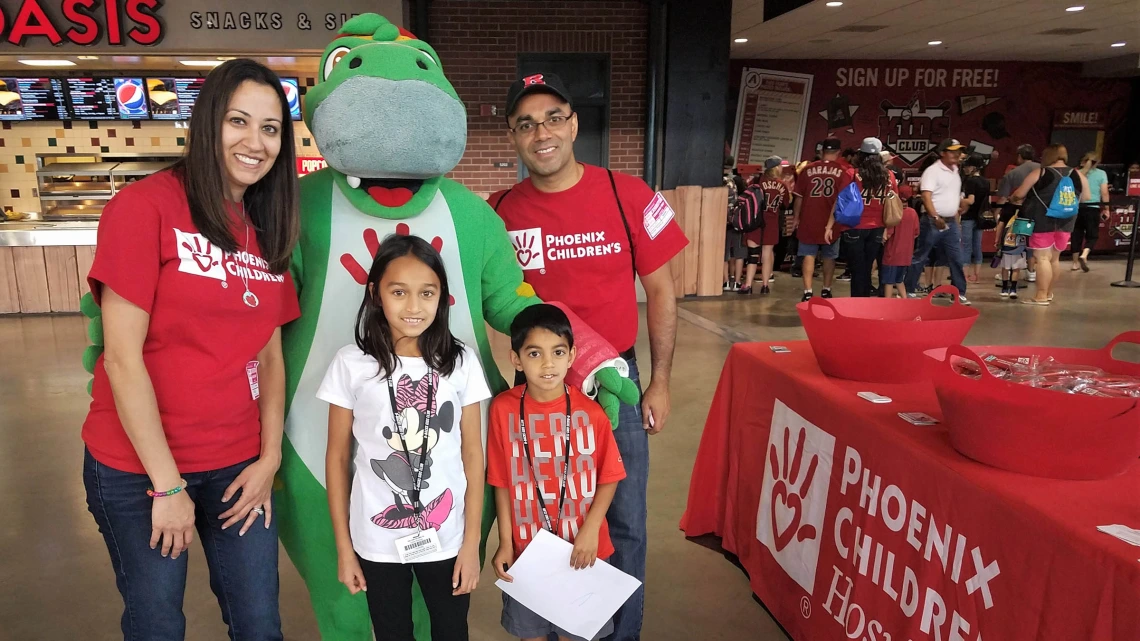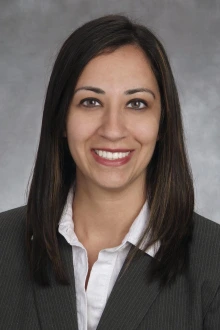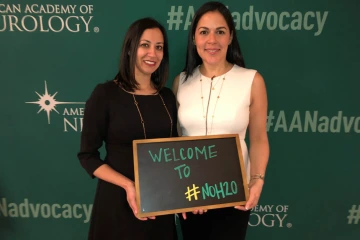Pediatric Neurologist Treats Children With Chronic Headaches
An early interest in how the mind works led Dr. Rastogi to specialize in pediatric headaches, a widespread and under-studied health problem.

Dr. Rastogi and family at a Diamondbacks game volunteering for Phoenix Children's Hospital
From a young age, Reena Gogia Rastogi, MD, FAHS, wanted to become a physician. Fascinated with the brain and driven by a love for pediatric medicine, Dr. Rastogi pursued pediatric neurology, and now provides care to children who suffer from headaches.

Reena Gogia Rastogi, MD, FAHS
Dr. Rastogi grew up in Sugar Land, Texas, where both of her parents worked in health care.
“I always knew I wanted to be a doctor,” Dr. Rastogi said. “I used to go to the hospital with my dad during the summers to volunteer. I had an interest in the mind and the brain pretty early on, even before college.”
Dr. Rastogi’s interest in the brain is what drew her to pursue a bachelor’s degree in psychology, with pre-med on the side. She attended medical school at St. George’s University in Grenada and completed clinical work in New Jersey, where she developed her passion for both pediatrics and pediatric neurology.
“I have had an interest in neurology as long as I can remember,” she said. “During my clinical rotations in medical school, I found that I love taking care of kids and trying to make them feel better. That’s how I became interested in pediatric neurology.”

Dr. Rastogi with colleague Clarimar Borrero-Mejias, MD
“One of my most fabulous mentors during residency was Marcy Yonker, MD, who is a headache specialist, and director of the program before me,” Dr. Rastogi said. “She was great! I learned so much from her.”
When Dr. Rastogi started working at Phoenix Children’s Hospital, she concentrated on headaches, which is a major focus in general child neurology. She became board-certified in headache medicine, and after Dr. Yonker left Phoenix Children’s Hospital, Dr. Rastogi took over as director.
As co-director of the Pediatric Headache Program, Dr. Rastogi manages the clinical side of the program while her Department of Child Health colleague, Robert Little, MD, is the research director. Their group has six doctors and one nurse practitioner, all of whom specialize in pediatric headaches.
“As doctors, we are dedicated to making the lives of our patients better.”Reena Gogia Rastogi, MD, FAHS, clinical assistant professor of child health and neurology, University of Arizona College of Medicine – Phoenix
“I handle all the clinical aspects of the program,” Dr. Rastogi said. “I ensure our headache clinics are running smoothly and that we are providing the most up-to-date, evidenced-based care to our pediatric patients with headaches. I am also the liaison between other medical specialties and the headache specialists.”
Dr. Rastogi said there are a limited number of studies on pediatric headaches, so continued research is important. She and her team are heavily involved in research and participate in clinical trials to determine if headache medications and non-medication treatments are safe and effective in the pediatric population. They also do clinical research within their institution, such as looking at how a specific treatment works for children or trying to implement a migraine action plan as part of the treatment for pediatric patients.
“As doctors, we are dedicated to making the lives of our patients better,” she said. “That’s our goal for everything that we do, from treatments, to research, to education.”

